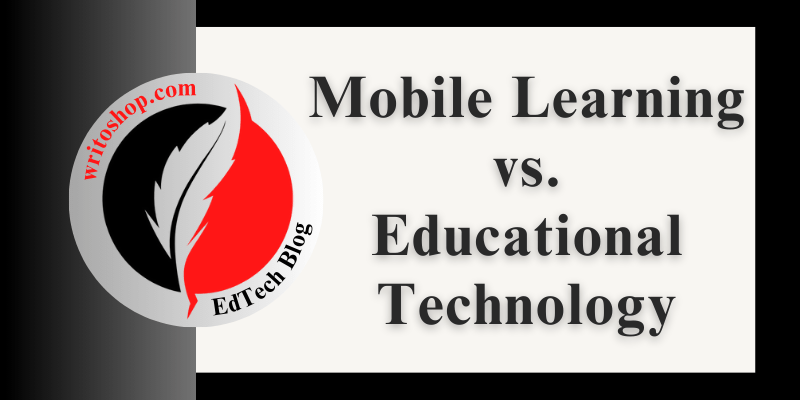
In an age dominated by smartphones and smart solutions, education has undergone a profound transformation.
Traditional classrooms are evolving into tech-enabled learning environments, and students are no longer confined to desks and textbooks.
Two powerful forces driving this change are educational technology (EdTech) and mobile learning. But what exactly do these terms mean, and how are they shaping modern education?
Let’s dive into the concepts of educational technology and mobile learning, and explore their applications, advantages, and future trends.
What is Educational Technology?
Educational Technology, often abbreviated as EdTech, refers to the use of technology to enhance the teaching and learning process.
It involves integrating digital tools, applications, and resources to make education more interactive, accessible, and effective.
Key Components of Educational Technology:
Hardware: Computers, tablets, interactive whiteboards, projectors
Software: Learning management systems (LMS), e-learning platforms, content authoring tools
Digital Content: E-books, videos, simulations, online quizzes
Communication Tools: Video conferencing, forums, educational social networks
Examples of Educational Technology in Action:
- A teacher using Google Classroom to assign and grade homework
- Students attending a live virtual class via Zoom
- AI-powered platforms offering personalized learning paths
- Schools adopting VR for virtual field trips and science labs
What is Mobile Learning?
Mobile Learning, or m-learning, is a subset of educational technology. It specifically refers to learning that occurs through mobile devices such as smartphones, tablets, and laptops. The key benefit? Learning on-the-go, anytime and anywhere.
Characteristics of Mobile Learning:
Portable: No fixed location required
Accessible: 24/7 availability of content
Interactive: Multimedia content keeps learners engaged
Personalized: Adaptive apps tailor lessons to the learner’s pace
Common Mobile Learning Tools:
- Educational apps like Duolingo, Coursera, Khan Academy
- Microlearning platforms delivering short, bite-sized lessons
- Podcasts, audiobooks, and YouTube channels for mobile-friendly content
- Flashcard apps like Anki for revision on the move
Benefits of Educational Technology and Mobile Learning
The fusion of educational technology and mobile learning offers a range of advantages for both educators and learners:
Accessibility for All: Learners from remote areas or with disabilities can now access quality education. Screen readers, subtitles, and multilingual interfaces promote inclusivity.
Flexible Learning: Students can learn at their own pace and revisit lessons anytime, which is especially beneficial for adult learners or those balancing jobs and studies.
Engaging Content: Videos, games, quizzes, and simulations make learning more enjoyable and memorable.
Data-Driven Insights: EdTech platforms provide analytics on learner performance, helping educators adjust content and teaching methods accordingly.
Cost-Effective: Digital resources can significantly reduce the need for physical textbooks, printed assignments, and travel costs.
Challenges to Consider
Despite its many benefits, educational technology and mobile learning also come with a few challenges:
Digital Divide: Not all students have equal access to devices or high-speed internet.
Distraction: Mobile phones can lead to off-task behavior if not managed properly.
Training Needs: Teachers and educators require upskilling to make the most of EdTech tools.
Data Privacy: With more data being collected, ensuring privacy and cybersecurity is crucial.
The Future of EdTech and Mobile Learning
As AI, augmented reality (AR), and 5G technology advance, the possibilities in educational technology and mobile learning are expanding rapidly.
Emerging Trends:
AI Tutors: Chatbots and AI-powered tutors providing instant help
Gamification: Turning lessons into games to boost motivation
Virtual Reality (VR): Immersive experiences for medical or architectural training
Blockchain: Secure, verifiable digital certificates and transcripts
The shift is not just about digitizing education—it’s about redefining how learning happens.
Conclusion
Educational technology and mobile learning are revolutionizing education by making it more dynamic, inclusive, and accessible.
From interactive apps to mobile-based courses, these innovations are bridging gaps in education and empowering learners across the globe.
Whether you’re a student, teacher, or lifelong learner, embracing these tools can unlock endless possibilities. As technology continues to evolve, so does the way we learn—smarter, faster, and more connected than ever before.
